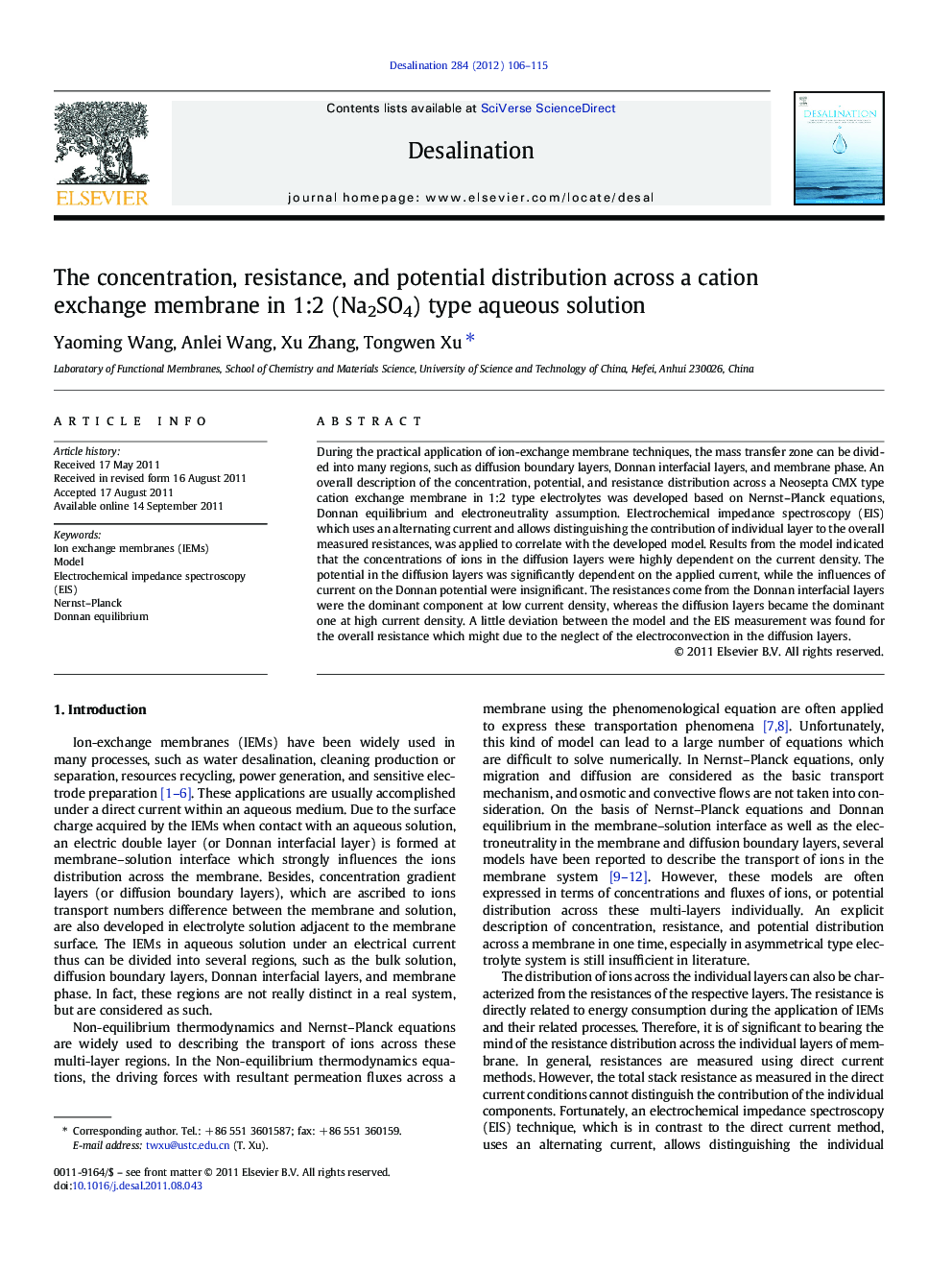| Article ID | Journal | Published Year | Pages | File Type |
|---|---|---|---|---|
| 624666 | Desalination | 2012 | 10 Pages |
During the practical application of ion-exchange membrane techniques, the mass transfer zone can be divided into many regions, such as diffusion boundary layers, Donnan interfacial layers, and membrane phase. An overall description of the concentration, potential, and resistance distribution across a Neosepta CMX type cation exchange membrane in 1:2 type electrolytes was developed based on Nernst–Planck equations, Donnan equilibrium and electroneutrality assumption. Electrochemical impedance spectroscopy (EIS) which uses an alternating current and allows distinguishing the contribution of individual layer to the overall measured resistances, was applied to correlate with the developed model. Results from the model indicated that the concentrations of ions in the diffusion layers were highly dependent on the current density. The potential in the diffusion layers was significantly dependent on the applied current, while the influences of current on the Donnan potential were insignificant. The resistances come from the Donnan interfacial layers were the dominant component at low current density, whereas the diffusion layers became the dominant one at high current density. A little deviation between the model and the EIS measurement was found for the overall resistance which might due to the neglect of the electroconvection in the diffusion layers.
► Concentration, resistance, and potential distribution across membrane was developed.► A correlation between the model and EIS measured resistance was performed. ► Concentrations of ions in the diffusion layers were highly dependent on current.
